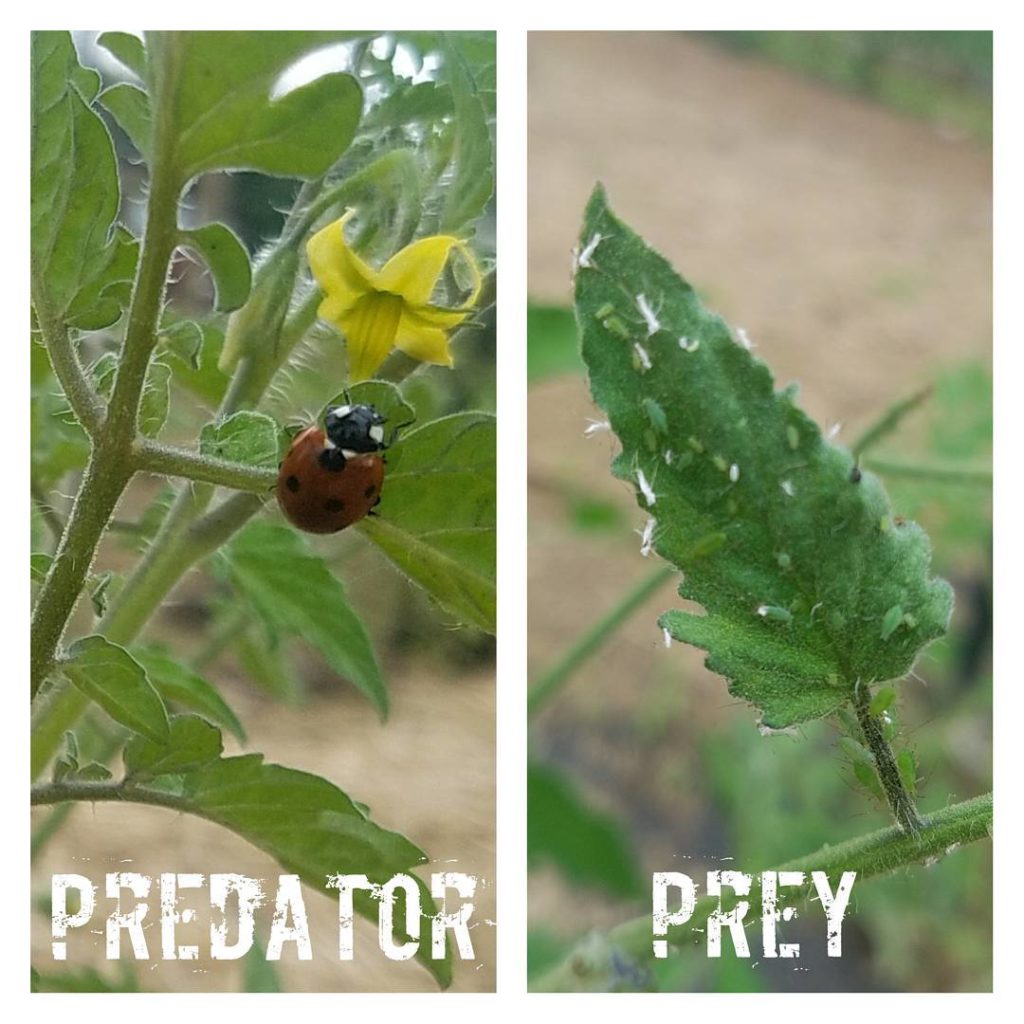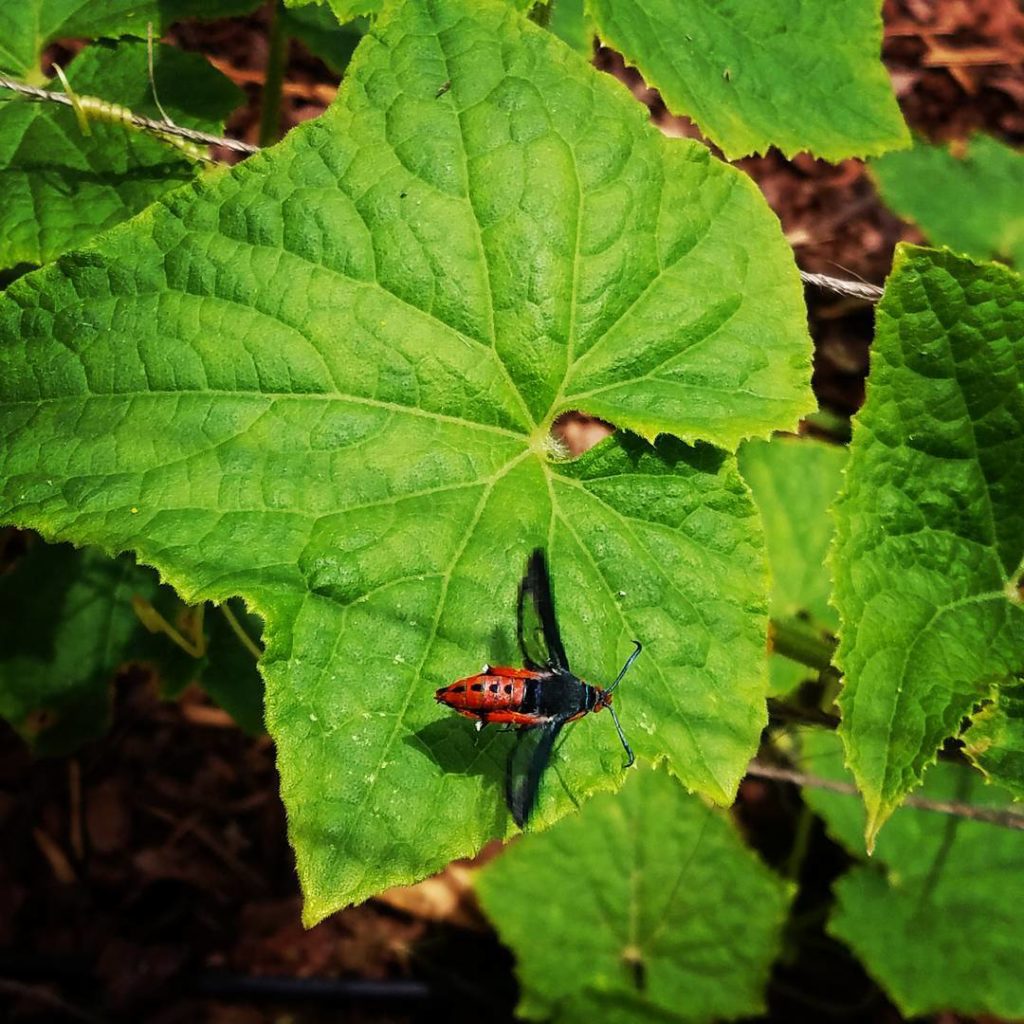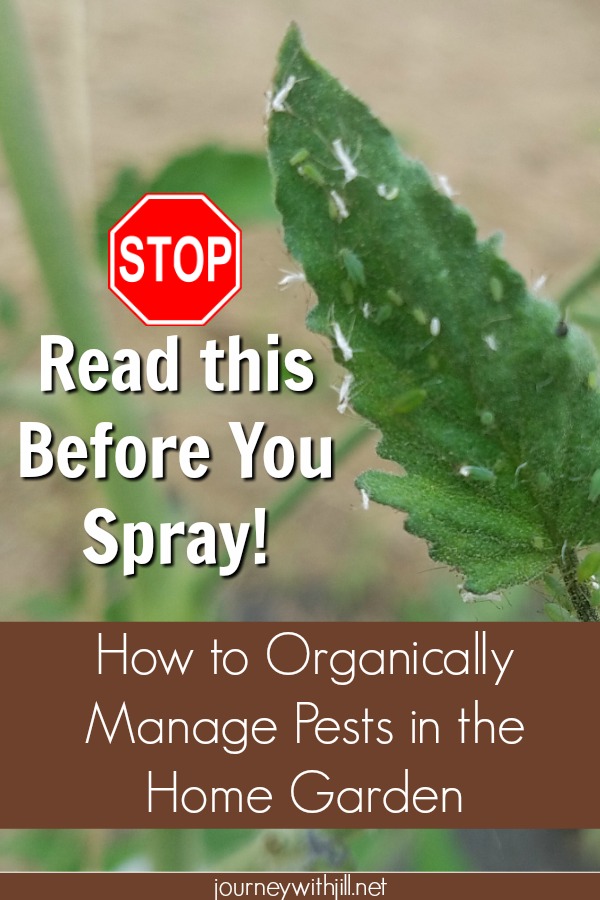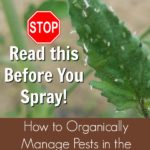Managing Insects in the Home Vegetable Garden
You want an organic home vegetable garden. But when your garden starts growing and you begin seeing insects using your carefully tended plants as their all-you-can-eat buffet, you wonder whether it’s even possible.
You search for the quickest remedy, wondering if it’s even possible to grow a garden without pesticides.
I understand. I can remember in my first garden, my beautiful potatoes served as a perfect meal for countless Colorado Potato Beetles. Having no idea what to do, I asked my mom, who promptly brought me a bottle of Sevin dust. Though it worked, I still had this desire to nix the red container for good. But how?
Enter Integrated Pest Management. Though I didn’t realize the concept had its own term, I began incorporating many of its practices in my home garden. Now, five years later, I never use synthetic pesticides and only have to use organic ones on rare occasions, maybe once or twice a year.
Thankfully, although my situation won’t look exactly like yours, the practices I incorporated into my own garden you can use in yours, too! But I don’t want you to just take my word for it. In this episode of the Beginner’s Garden Podcast, I talked with Integrated Pest Management (IPM) expert Patrick Byers of the University of Missouri Extension. He talked about what you should do before you spray anything on an insect as well as practical tips for how to manage aphids, squash bugs, squash vine borers, cabbage worms, slugs, and Japanese beetles — all organically and with minimal spraying! Click below to listen to this information-packed episode or read the highlights below.
How to Organically Manage Pests in the Home Garden
Managing insects in your home vegetable garden organically isn’t simply a matter of what not to spray. It’s much more beautiful than that! Using Integrated Pest Management (an environmentally sensitive approach to pest management), you work with nature instead of against it. Yes, even pests serve as a critical link in the web of nature and even in your garden.
But none of us wants to grow a garden for those pests, so here are the steps Patrick Byers recommend taking to promote a natural and organic approach, while growing a productive garden.
What to Do Before You Spray
Identify the Problem
Not all insects eat your vegetables. You have to determine first, is the problem actually a problem? The majority of insects you see in your garden are beneficial or neutral, not harmful. So before you do anything, make sure to identify the issue.
Consider the Strategies Available
Once you have identified the problem, you can then start to enact strategies to combat it, starting from the least invasive to the most aggressive:
Biological Control: Encourage natural predators and parasites of insect pests:
- Avoid spraying any pesticide, even organic options, when possible.
- Allow wild areas to grow in designated places in your property.
- Let cool weather crops and herbs flower before pulling them out.
Mechanical Control: Hand-pick pests as you see them.
Cultural Control: Choose planting dates for specific crops so that the growth of those crops do not coincide with the insects most likely to damage them at critical times.
See how I do this with my squash plantings to avoid the squash vine borer below:
Genetic Control: Plant vegetables that are more resistant to particular pests in your garden.
Organic Chemical Control: If the above measures do not control the problem to your satisfaction, you can look at organic chemical control options, such as Bacillus Thuringiensis (bT), Neem Oil, or Spinosad (among others). These are naturally occurring substances, bacteria, or fungi that are specific in what they target and do not last long in nature.
Evaluate the Results
If what you tried worked, repeat it as necessary, but if it didn’t, adjust and try another method.
How to Organically Control 6 Common Insect Pests

Aphids
- Attract ladybugs and other aphid-preying beneficial insects by promoting a good habitat for them (flowers, wild areas, etc.), and be cautious about what insecticide you use. Any kind that targets any type of beetle will kill ladybugs.
- Learn to identify the adult and larvae of the ladybug, lacewings, and syrphid fly — these beneficial insects feast on aphids.
- Spray a stream of water to dislodge the aphids from the plant, and be sure to spray on the underside of leaves, where they congregate.
- Hand-pick aphid clusters found on the growing points of plants
- Apply insecticidal soap and then another application 7 days later (always test spray first, and beware of home methods — they can burn the plant if mixed or applied incorrectly!)
Squash Bugs
- Be present in the garden when over-wintered squash bugs emerge (especially when the squash plants are young).
- Hand-pick and dispose of adults. This is easier to do in the morning when they move slowly. Turn leaves over and search at the base of the plants.
- Look for eggs on the underside of leaves; scrape them off and dispose.
- Protect young squash plants with row covers early in the season; remove when blossoms form, which are required for pollination.
- Try trap-cropping: plant blue hubbard or red curry squash on the edge of the garden, which may lure squash bugs to them instead of to your prized plants.

Squash Vine Borer
- Apply row covers until flowering.
- Rotate crops from year to year.
- Use baited traps or yellow bowls with water to trap the adult squash vine borer moth before she lays her eggs.
- With vining squash, wrap the base of squash stems with aluminum foil, strips of insect netting, or medical gauze.
- If you find the stem affected, surgically remove the borer and cover the incision site with moist soil. Watch how here.
- Plant resistant varieties such as Butternut squash.
Cabbage Worms
- Apply row covers immediately after seeding or transplanting.
- Hand-pick worms as you see them.
- Use a powdered form of Bacillus Thuringiensis (bT)
- Use Spinosad (warning — this causes harm to beneficial insects)
Slugs
- Go out in the garden in the early morning and hand-pick.
- Trap them with liquid baited trap or shallow pans with mollasses/water or beer buried at soil-level.
- Trap them by digging a depression across the bed and laying a board on top. Then dispose of the ones that make a home on the underside of the board.
- Utilize organic slug baits.
- For small plantings, lay copper stripping around the plants.
Japanese Beetle
- Hand-pick early “scout” beetles as they begin arriving in early summer.
- Use row covers.
- With persistent infestations, apply milky spore disease or parasitic nematodes to the soil to kill the grubs.
- Encourage natural predators, such as the assassin bug.
- Use a Japanese Beetle Trap away from the plants you want to protect. Monitor it regularly, empty it frequently, and change the pheromone as needed, at least once per season.
These ideas give you a great place to start in implementing Integrated Pest Management into your home garden!
Home Garden Guides:
Ohio State University
University of Michigan
Cornell University
Pennsylvania State University
Do you get overwhelmed with garden planning?

Subscribe here for my best tips to plan your garden in just 7 days -- all for FREE.
Plus, I'll send you my "In the Garden E-mail" on Fridays, periodic updates on garden resources relevant to you, and you'll receive access to my entire bank of free garden downloads!
You are also agreeing to our privacy policy.


